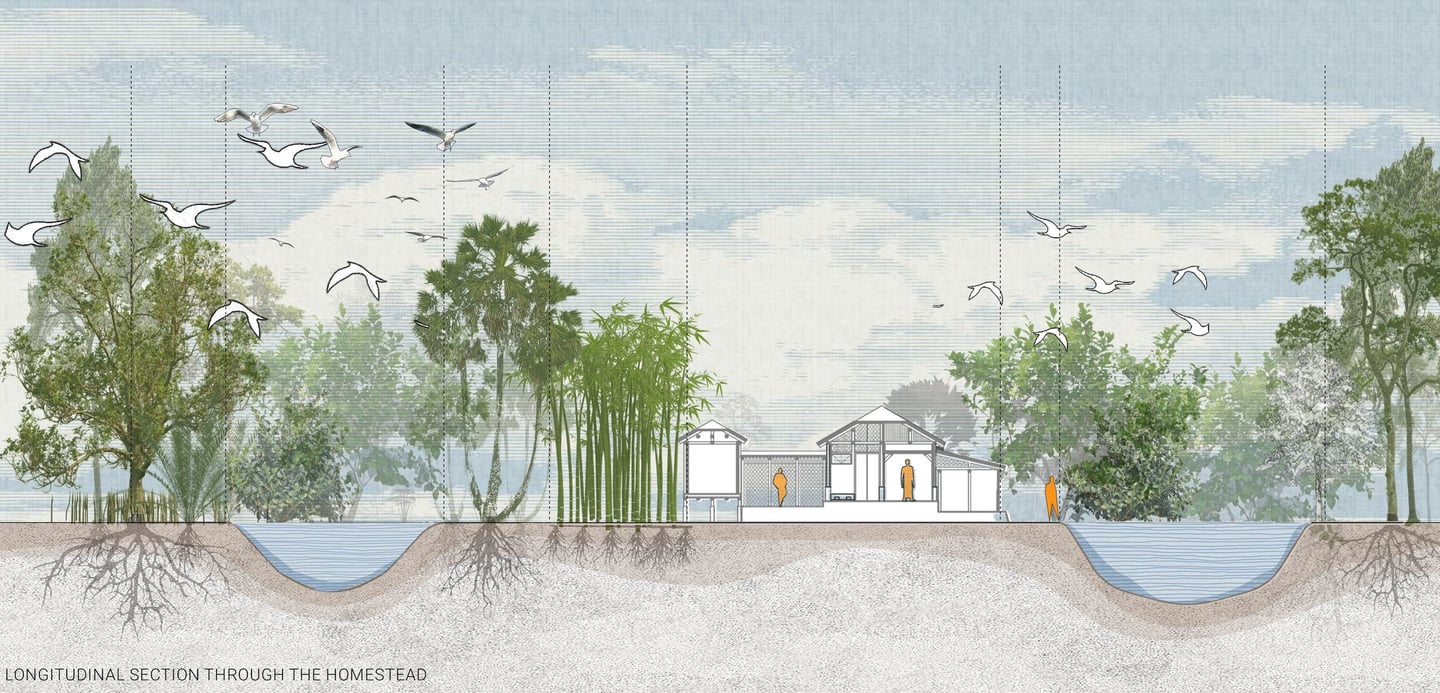

Sundarbari - Towards New Normal
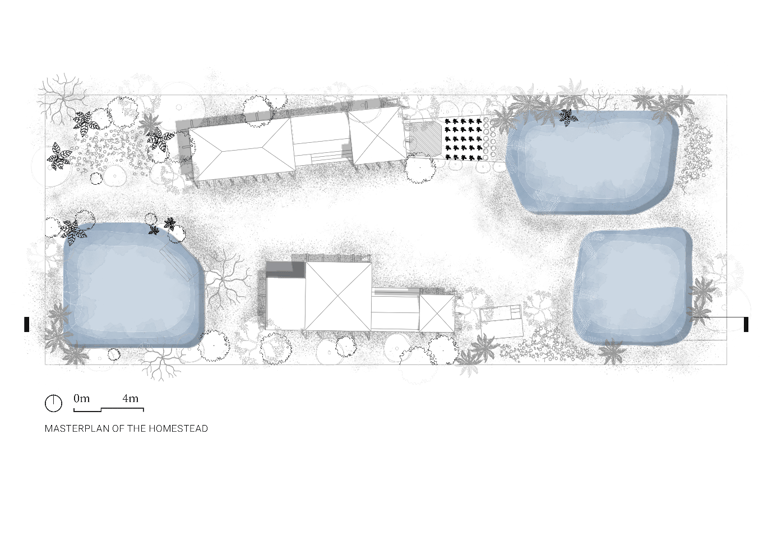
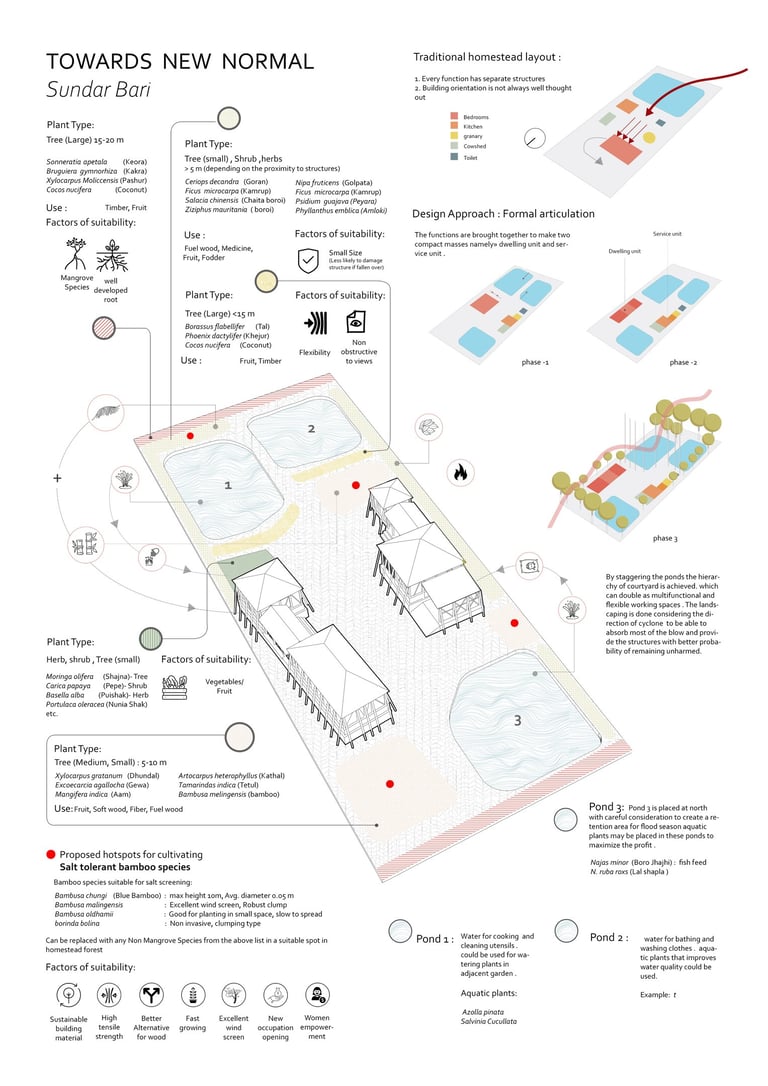

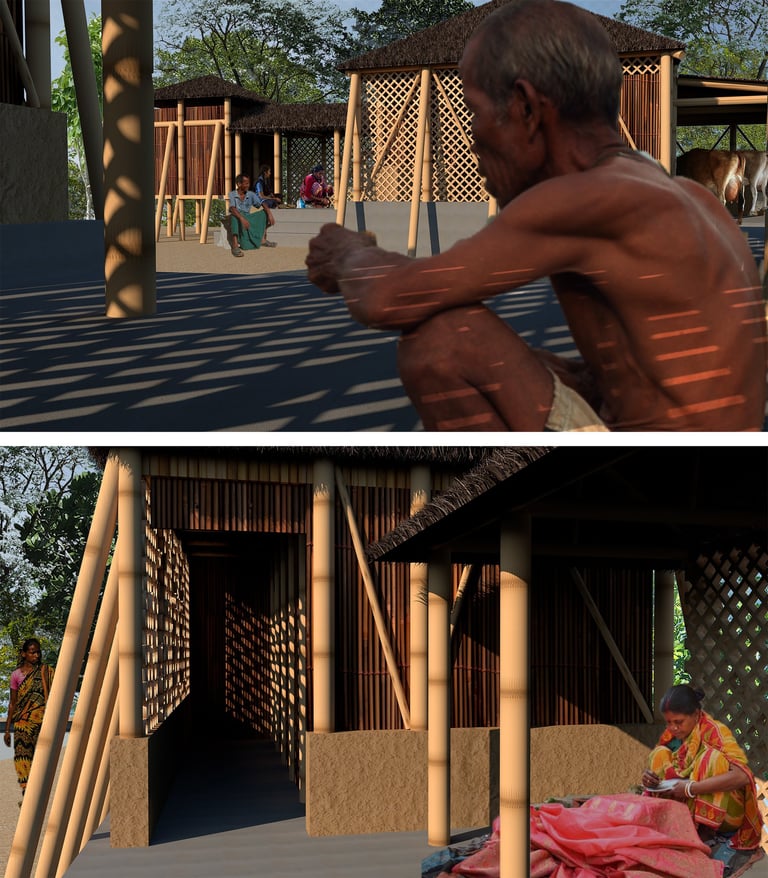
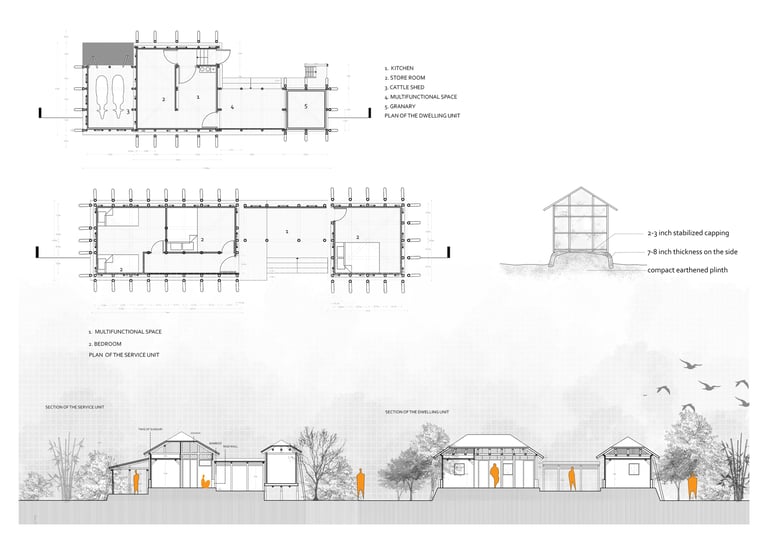
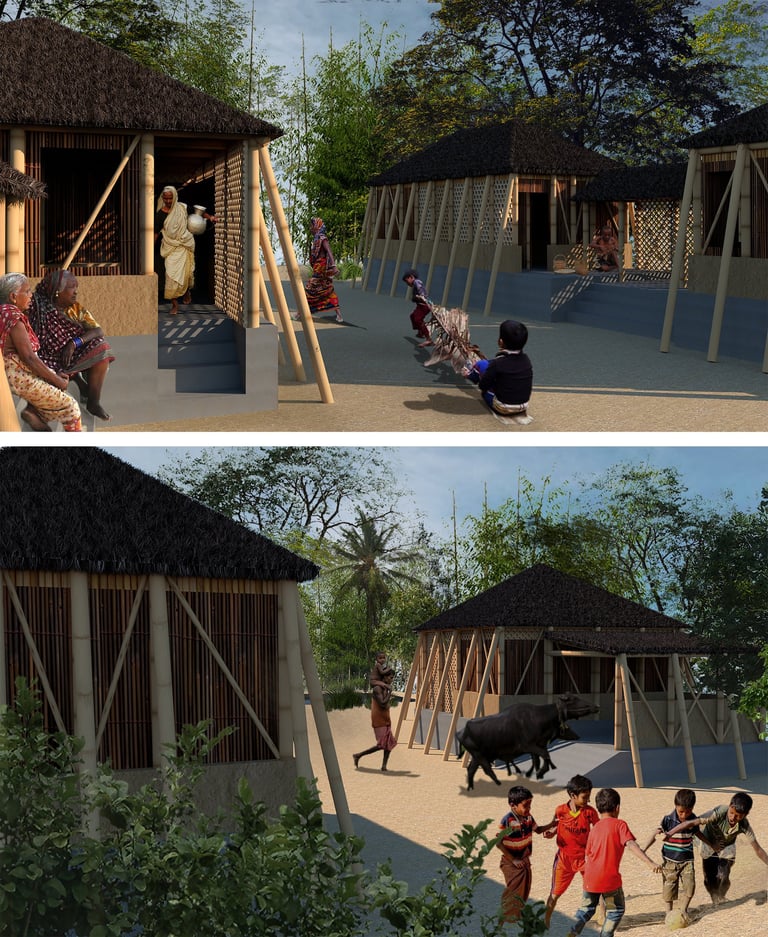






For years, the traditional homesteads of these regions depended so heavily on resources from the Sundarbans that it caused deforestation to an extent of 8.3% of total forest cover making many plant species extinct. The solution is to compensate the lost forest cover through agroforestry while reducing pressure on traditional materials to prevent further deforestation. To solve these conflicting necessities, our proposal is to introduce salt resistant bamboo species in parts of homestead forest as an alternative to existing building materials. Unlike wood, bamboo regrows after a harvest and is a much better building material against cyclone due to its flexibility and higher tensile strength. It also creates more income scopes when used for handicrafts and in clumps, live bamboo works as wonderful wind break for cyclone prone communities.
Our aim is to gradually shift towards bamboo as primary and more sustainable building material by initially incorporating them in a layering of vegetation towards the direction of the cyclone. This would take the first blow and help mitigate the impact of cyclone on building structures. For better protection, the existing functions are clustered under two strong bamboo structures that draws inspiration from the stilt root system of the mangrove. Three ponds are proposed to provide solution for the scarcity of water. Separate ponds towards inner court provide water for cooking and bathing. The one on the embankment end act as a retaining pond in case of flood and double as backup source if necessary
Project Type: Academic (SEARCH INTERNATIONAL STUDENT DESIGN COMPETITION | 2020)
Location: The Sundarbans
Team: Afra Anan Saba, Fahmidur Rahman, Sadrila Abbasi
© Sadrila Abbasi. All rights reserved.